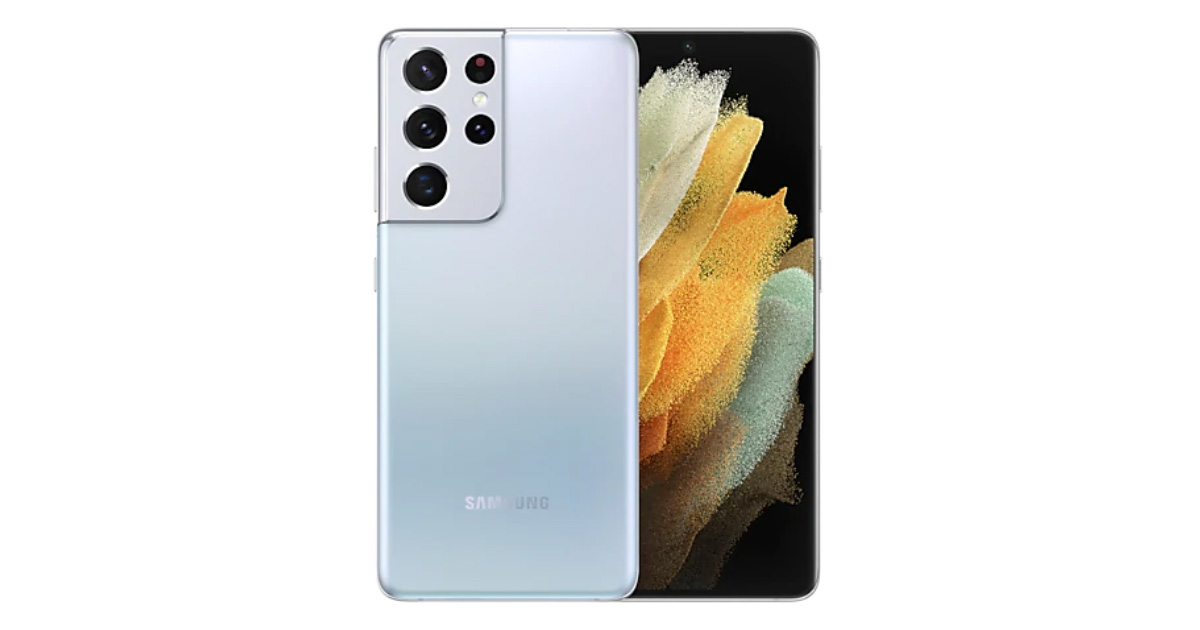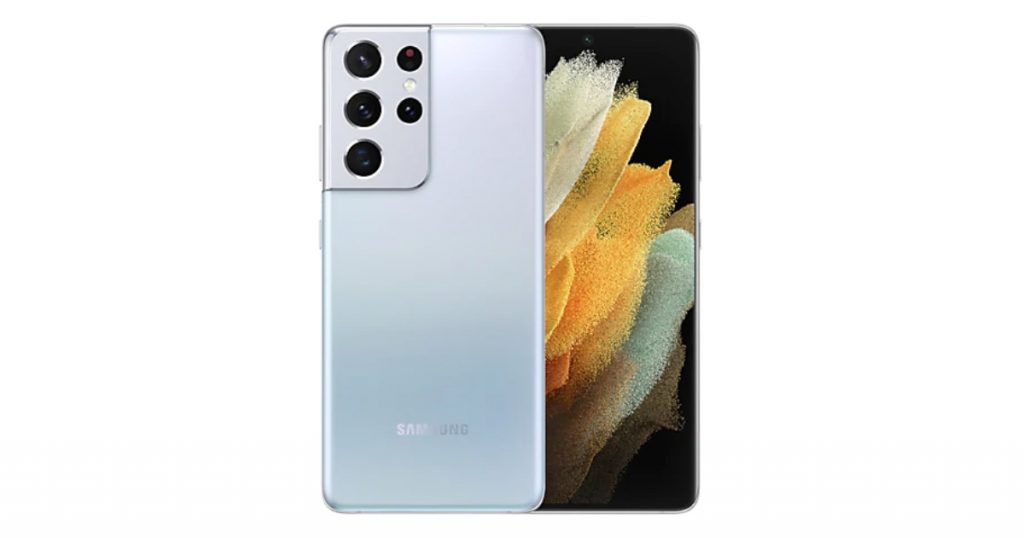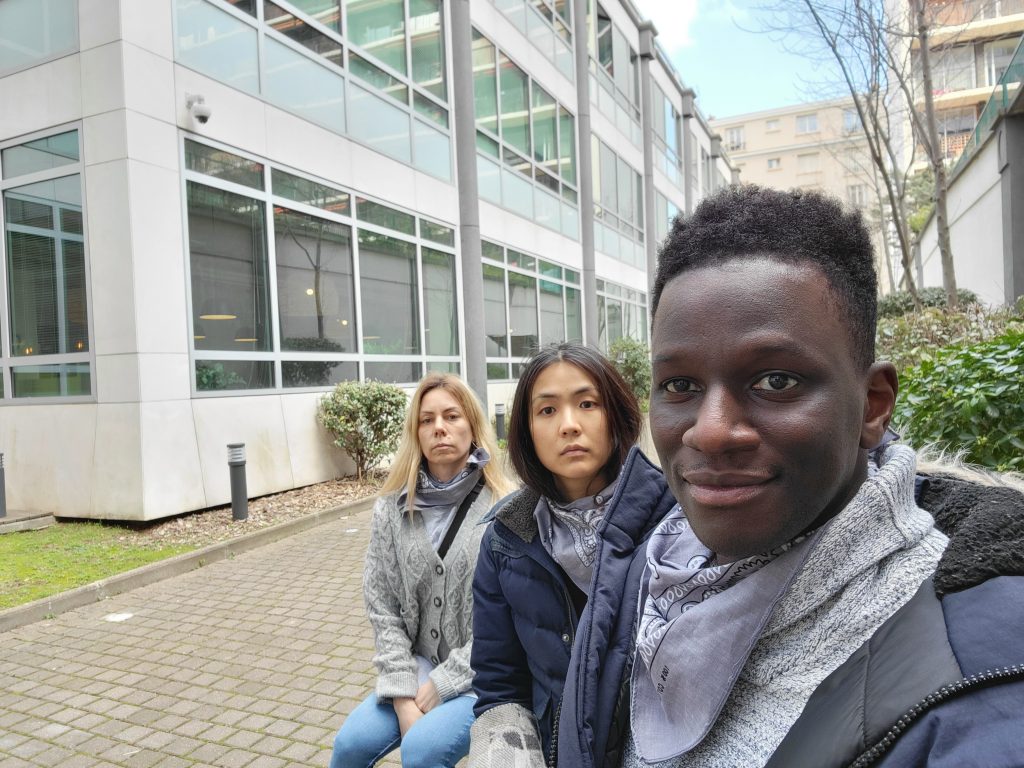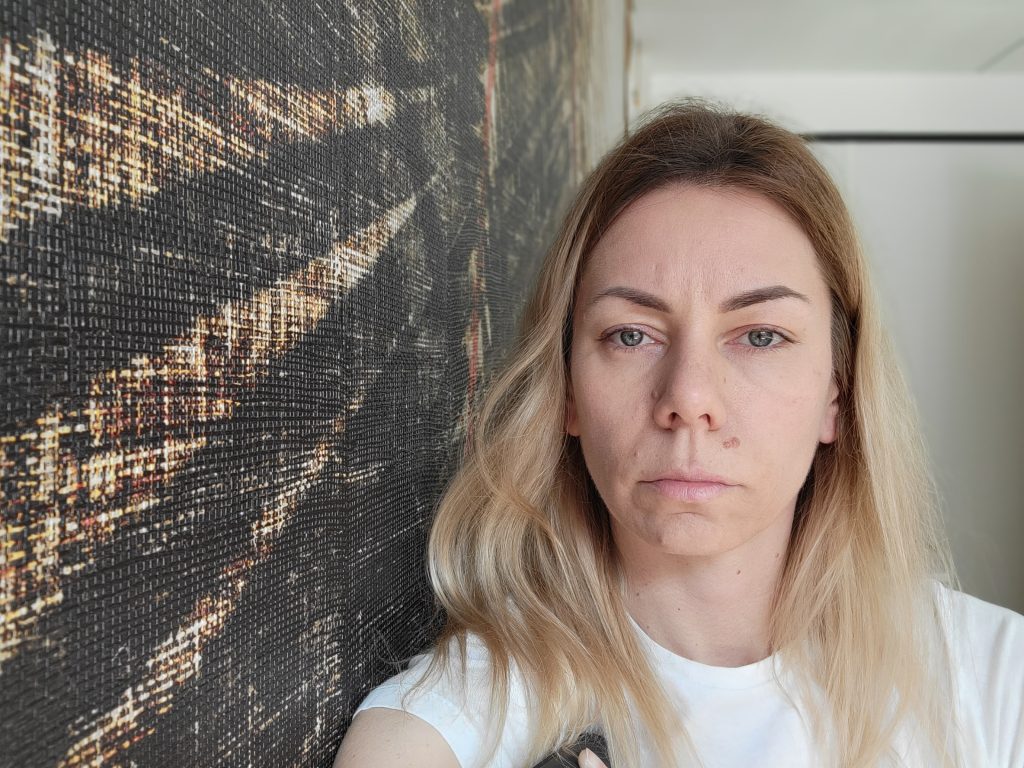Featuring the latest high-end Snapdragon 888 chipset, the Galaxy S21 Ultra 5G (Snapdragon) is the variant of Samsung’s 2021 flagship available in the US and China. Processor aside, other hardware specs are identical with the Exynos version that’s on sale in the rest of the world, including a 6.8-inch Dynamic AMOLED display with 3200 x 1440 resolution and flexible frame rates up to 120 Hz. Both versions offer S-Pen stylus support and a rear camera with wide, ultra-wide and two tele-lens modules.
The front-facing selfie camera isn’t quite as sophisticated, but it still has a few neat tricks up its sleeve. The single 40 MP Quad Bayer sensor pixel bins down to a 10 MP output when multiple faces are detected, but the device will automatically zoom in on single-person selfies to ensure they fill the frame. This digital zoom solution results in a lower resolution 6.5 MP final output. The f/2.2-aperture 80˚ field of view lens offers Phase Detection Autofocus (PDAF), which still isn’t very common on selfie cameras, and can help ensure faces at different distances retain good detail.
In video mode the front camera offers high resolution 4K capture at either 30 fps or 60 fps. Read on to see how the Samsung Galaxy S21 Ultra 5G (Snapdragon) performs under the DXOMARK Selfie test protocol.
Key front camera specifications:
- 40 MP sensor with 0.7µm pixel size (10MP 1.4µm)
- 80˚ field of view lens with f/2.2-aperture
- PDAF autofocus
- Fixed focus
- 4K video at 30/60fps (30fps tested)
About DXOMARK Selfie tests: For scoring and analysis in our smartphone front camera reviews, DXOMARK engineers capture and evaluate over 1500 test images and more than 2 hours of video both in controlled lab environments and in natural indoor and outdoor scenes, using the camera’s default settings. This article is designed to highlight the most important results of our testing. For more information about the DXOMARK Selfie test protocol, click here.
Test summary
Scoring
Sub-scores and attributes included in the calculations of the global score.

Samsung Galaxy S21 Ultra 5G (Snapdragon)


 32nd
32nd 25th
25thPros
- Accurate and stable white balance in most photos and videos
- Wide dynamic range in HDR photos and videos
- Pleasant skin tone rendering in most photos and videos
- Well-preserved detail in indoor and outdoor photos and videos
- Generally accurate autofocus in videos with wide depth of field in photos
With a DXOMARK Selfie overall score of 99, the Samsung Galaxy S21 Ultra 5G (Snapdragon) just makes the top ten in our selfie camera rankings, a point behind last year’s Samsung Galaxy S20 Ultra 5G (Exynos) on 100.
A Photo sub score of 104 for the S21 Ultra 5G (Snapdragon) also matches the result achieved by all variants of the S20 and Note20 Ultra, and is only a few points behind our current top device for selfies – the Huawei Mate 40 Pro on 110.
The S21 Ultra 5G (Snapdragon) drops down the rankings a little for front camera video however. Its Video score of 91 is 4 points behind the S20 and Note20 Ultra’s on 95 and a couple of points away from key competitors such as the iPhone 12 Pro and Google Pixel 5.
In our analysis, photos from the front camera produce accurate white balance with natural-looking skin tones in most cases, and dynamic range is fairly wide in high contrast scenes. Texture rendering is also excellent, with fine facial details very well preserved, although at the expense of some luminance noise, which is visible in all images.
There are some other minor drawbacks with perhaps the most obvious being the slightly low target exposures in some conditions. You can see in the example below, that while the S21 Ultra 5G (Snapdragon) retains good highlight detail in the clouds and sky on this backlit selfie, the subject’s face is exposed better on the Apple iPhone 12 Pro and S21 Ultra 5G (Exynos) examples. Micro contrast is often better on the Snapdragon version, however, which renders slightly more natural-looking results in HDR scenes compared to the Exynos equivalent.
Accurate and reliable autofocus ensures the target face is always in sharp focus, and we observed no serious failures during our analysis. Texture rendering is generally very good too. Particularly in outdoor and indoor selfies, the level of fine detail in faces is high and similar to results from the Exynos version. As mentioned, depth of field is also fairly extended generally, but when single faces are very close to the camera at around 30cm, the level of background detail isn’t quite as good as devices like the iPhone 12 Pro.
Other areas for improvement include luminance noise, which is visible in all S21 Ultra 5G (Snapdragon) selfies, and more ringing artifacts are noticeable on the Snapdragon version compared with the Exynos. When using the device’s screen flash in very dark conditions, strong lens shading produces dark corners. Flash results are comparable to the Exynos version, however, and both devices provide accurate exposure on faces towards the center of the frame, with nice skin tone rendering, to ensure the subject is well represented.
In portrait mode, bokeh shots from the front camera are very comparable between the Snapdragon and Exynos versions. Very slight improvements to depth estimation were noted by our testers, but the same abrupt changes in the gradient between the sharp and blurred areas remain evident.
Tested at 4K/30 frames per second, front camera video on the S21 Ultra 5G (Snapdragon) displays similar strengths and weaknesses to its stills performance. Video exposure is good, with generally wide dynamic range doing a good job of preserving highlight detail, although low target exposures on faces in bright conditions remain evident and slight exposure instabilities do occur.
Details are well preserved in most videos too, and although things get a little softer in low light conditions you won’t have too many complaints. Noise is also managed a little better is videos compared to stills. Under indoor and low light conditions a little temporal noise is evident, but its fine grain structure ensures is far from offensive and outdoor videos are rendered fairly clean.
The accurate white balance and pleasant skin tones we noted with stills continues, with particularly good color rendering on outdoor and indoor videos from the S21 Ultra 5G (Snapdragon). Autofocus performance is accurate and stable in outdoor videos too. It’s not quite as good in indoor or low light conditions; where occasional instabilities and out-of-focus movies were observed, and depth of field in videos isn’t quite as extended as we saw in the S21 Ultra 5G (Snapdragon)’s stills. Artifacts such as color quantization, flare and anamorphosis are sometimes visible too, and some jello and residual motion effects persist in video captured while walking.
Conclusion
Boasting an automatic digital zoom for single-person selfies with a wider field of view for group shots, as well as an autofocus lens, the Samsung Galaxy S21 Ultra 5G (Snapdragon) offers the kind of well spec’d front camera you would expect from a top-end flagship.
Results for both photos and video are good, and for the most part the device delivers wide dynamic range, nice color, high detail and accurate autofocus across front camera stills and videos. There’s no noticeable improvement over the S20 models, while the results between the Exynos version, as well as key competitors including Apple and Google flagships, are comparable. Despite some minor drawbacks, including low-face exposures in bright backlit conditions, visible noise, and abrupt blur transitions in bokeh shots, most users will be content with selfies from the Samsung Galaxy S21 Ultra 5G (Snapdragon).











DXOMARK encourages its readers to share comments on the articles. To read or post comments, Disqus cookies are required. Change your Cookies Preferences and read more about our Comment Policy.